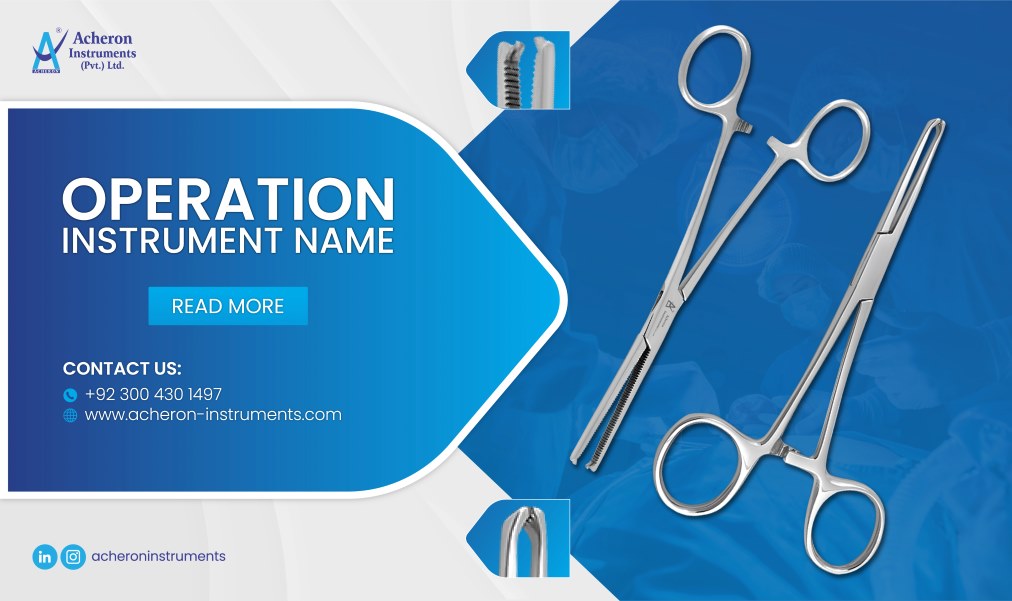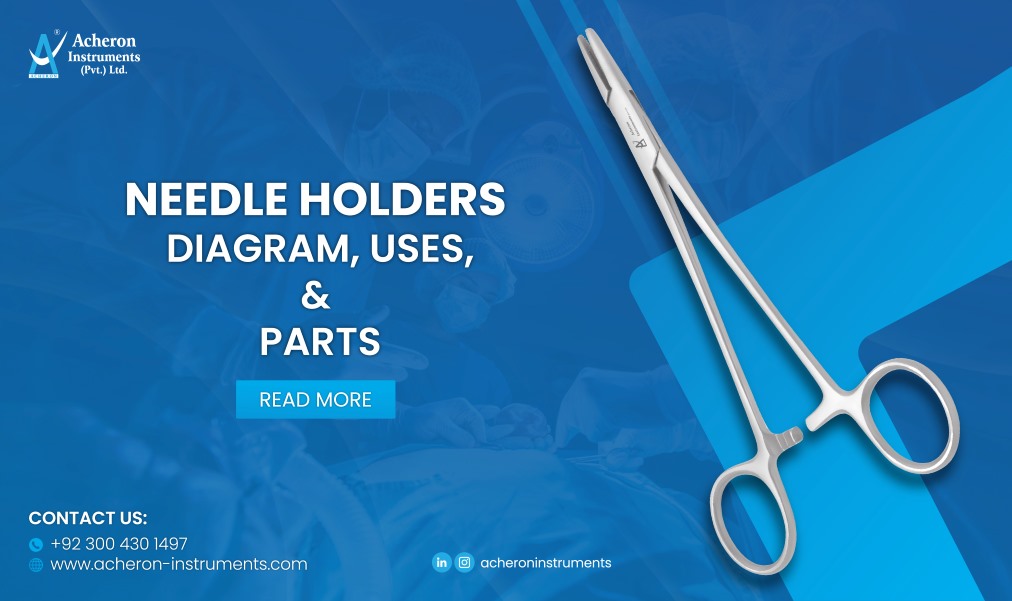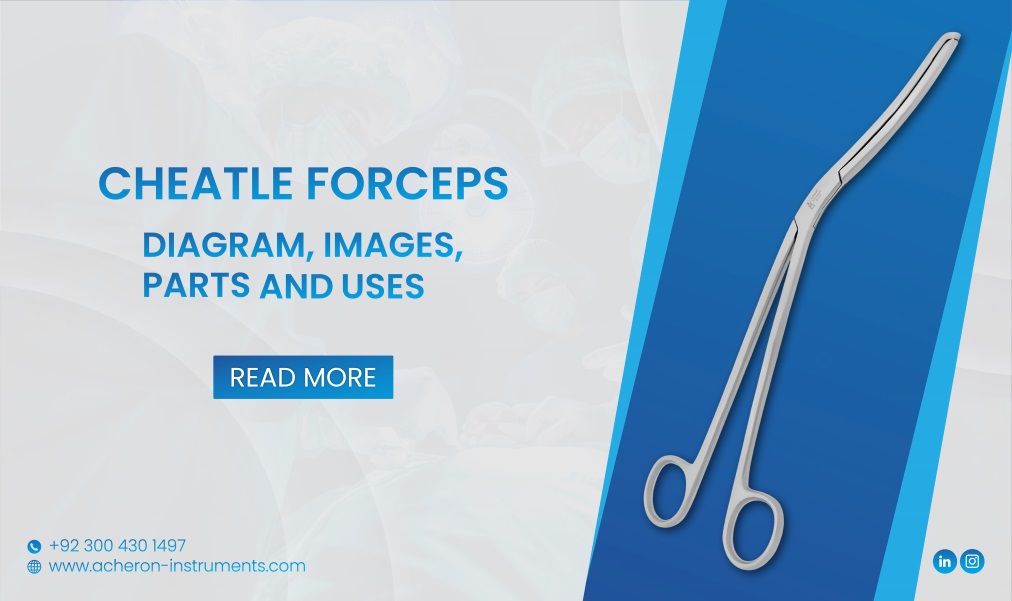 Surgical instruments are crucial for every toolkit of the operating room. If you want to increase the longevity of your surgical tools and enhance surgical precision, it is important to take care of these instruments. Proper care and handling of these surgical tools is of utmost importance not only during surgeries but also after the surgery is complete. Before we discuss how should instruments be handled after the surgery is complete, let’s first talk about why taking care of instruments is important.
Surgical instruments are crucial for every toolkit of the operating room. If you want to increase the longevity of your surgical tools and enhance surgical precision, it is important to take care of these instruments. Proper care and handling of these surgical tools is of utmost importance not only during surgeries but also after the surgery is complete. Before we discuss how should instruments be handled after the surgery is complete, let’s first talk about why taking care of instruments is important.
Importance of care and handling surgical instruments
Here are some key reasons why the proper care of surgical instruments is crucial:
- Patient safety: inadequately cleaned or contaminated instruments can increase the risk of post-surgery infections. Therefore, it is important to clean them properly to avoid these life-threatening complications
- Surgical precision: Improper maintenance, damage, or contamination of surgical tools can compromise surgical precision, adversely affecting their efficiency and performance.
- Instrument longevity: By properly handling and caring for your surgical tools, you can increase the lifespan of these generally expensive tools. Consequently, there will be a reduced need to frequently replacements of these tools and save on operational costs
- Cost Efficiency: You will be able to save costs in the long run if you maintain your instruments in good condition as it reduces the need for frequent repairs and replacements.
Mostly surgeons are asking how should instruments be handled after the surgery is complete. it is not a difficult job let me explain.
How should instruments be handled after the surgery is complete?
First, we must analyze the immediate handling of surgical instruments after finishing surgery:
- Collect the used surgical tools in the designated area
- Inspect each instrument for any visible signs of damage, contamination, or blood residues, and keep those instruments aside
- Dismantle the instruments with moving parts such as needle holders and scissors to ensure a thorough cleaning
Key tips for care and handling of surgical instruments
After gathering the used tools in a kidney tray, they are cleaned and sterilized. This makes sure they are safe and ready for future use while keeping their quality intact.
- Pre-cleaning: After the procedure, clean and dry your surgical tools to prevent staining. Use cool or warm distilled water or solution with a pH below 10. Avoid hot water as it can make substances coagulate. Dry the instruments with a clean towel to prevent corrosion and damage. Keep scissors and forceps open while drying.
- Use for intended purpose only: Make sure to use the surgical instruments for their intended purpose as incorrect use of these instruments can damage them. Also, inappropriate usage of these tools can impact the performance of these tools.
- Don’t use harsh chemicals: To prevent damage to an instrument's surface and reduce its lifespan, it is important to avoid using strong chemicals. Long-term contact with salty or harsh substances can cause corrosion.
- Use a gentle brush: wire or steel brush can adversely affect your surgical instruments and damage them. So, you must use a soft gentle brush while cleaning your surgical tools such as nylon or stiff plastic brushes
- Lubrication: The process of cleaning may cause the instrument’s joints to get stiff. This takes place due to mineral deposits in the water system. The metal-to-metal friction also causes corrosion. Therefore, we recommend applying lubricant by spraying it on the instruments after every cycle of cleaning.
- Ultrasonic cleaning: It is a preferred method healthcare facilities use to effectively remove dirt from instruments. It uses sound waves to create tiny bubbles in a cleaning solution. These bubbles burst and clean the objects placed in the solution. We recommend leaving the objects in the solution for 5 to 10 minutes.
Sterilizing
After proper cleaning and drying of tools, the Sterilization of surgical instruments holds significant importance. Different methods are used to clean surgical tools before they are used in medical procedures to remove any germs. Two commonly used methods include;
Autoclaving: This method is widely used for most surgical instruments. Autoclaves use high-pressure steam to kill microorganisms effectively. Avoid locking a tool while it's being autoclaved. This reliable and cost-effective method ensures that the steam can access and sterilize the areas where metal meets metal.
Cold sterilization: This also known as cold disinfection, is a method of sterilizing or disinfecting items, particularly medical instruments without using heat. Unlike traditional sterilization methods like autoclaving, cold sterilization relies on chemical solutions to eliminate or reduce the presence of microorganisms, including bacteria, viruses, and other pathogens.
However, In case the tools only require disinfection (essentially cleaning), cold sterilization is suitable as it completes the process in just 10 minutes. However, if the goal is to make the tools completely sterile (ensuring no living organism survives), it is advisable to use autoclaving.
Storage
Proper storage of surgical instruments is key to their functionality and longevity. You need to follow these guidelines:
- You should store instruments in a clean, dry, and well-ventilated area.
- Use instrument trays or racks designed for sterile storage, and ensure proper labeling for easy identification.
- Keep tools out of direct sunlight, dampness, and severe temperature conditions.
- Regularly check stored tools to avoid rusting, corrosion, or any other form of damage.
Conclusion
Acheron Instruments provides the best quality German-grade stainless steel surgical instruments to enhance surgical performance and precision in healthcare departments. We have an extensive range of surgical tools including forceps, scissors, and surgical retractors. The proper handling of surgical instruments after a procedure is just as important as their use during surgery.
Thorough cleaning, sterilization, and routine maintenance ensure the guarantee of the durability and efficiency of these instruments, thereby enhancing the safety and success rate of subsequent surgeries. Therefore, Healthcare facilities should establish and maintain rigorous protocols for instrument care to safeguard the health and well-being of their patients.
FAQ’s
How should instruments be handled after the surgery is complete?
You should remove damaged instruments from the set for repair or replacement to ensure safe and effective future use.
Which sterilization method is preferred for surgical instruments made of German-grade stainless steel material?
The most common and recommended sterilization method for stainless steel surgical instruments is autoclaving. This method uses high-pressure steam to sterilize the tools effectively.
What are the consequences of inadequate handling and care of surgical instruments?
Inadequate handling can lead to surgical complications, patient infections, increased costs, and a negative impact on the reputation of healthcare facilities.








